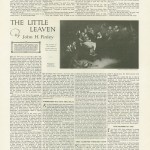
The top five industries in 1940 included manufacturing (23.4 percent), agriculture (18.5 percent), retail (14 percent), personal services (8.9 percent) and professional services (7.4 percent). In 2010, women earned 74 cents for every dollar a man earned. Women in 1940 earned 62 cents for every dollar a man earned.

Seventy years later, the median income was $33,276. The median income for a man in 1940 was $956. By 2010, 28 percent of Americans were college graduates. Only 5 percent of the 1940 population had college degrees. In 2010, the three states with the most people were California (37.2 million), Texas (25.1 million) and New York (19.3 million). In 1940, the three most populous states were New York (13.4 million), Pennsylvania (9.9 million) and Illinois (7.9 million). By 2010, 72.4 percent signed up as white and 12.6 percent were listed as black or African-American.

Some 9.8 percent were black and 0.4 percent registered as other. In 1940, nearly 90 percent of those surveyed were white. By 2010 - the year of the most recent census data - there were nearly 309 million people. In other words, 72 years was considered at the time to be longer than most lifespans.įrom aggregate information made available by the Census Bureau, we already have a broad-stroke, then-and-now portrait of 1940.īack then, for instance, there were just over 132 million people in the United States. "In 1952, the director of the Census Bureau and the National Archivist agreed that keeping census records private for 72 years balanced public release of federal records with the tradition of confidentiality," explains the Census Bureau's Glasier. There is a reason that all of this up-close-and-personal information from 1940 is being released all these years later. It all added up to a sort of primitive Facebook. And bit by bit, a mosaic of American life took shape. Everyone spoke openly of their living arrangements, their jobs, their families, their faith and a whole lot more.

They let the census-takers into their homes and they answered all kinds of questions. With privacy guaranteed, people opened up. The vast data dump, Kyvig says, will allow historians "to look closely at particular communities and how people within them were doing in terms of employment, income and material comforts." Kyvig, author of Daily Life in the United States, 1920-1939. The pivotal year 1940 "marked the beginnings of a shift from a depressed peacetime to a prosperous wartime," says David E.


 0 kommentar(er)
0 kommentar(er)
